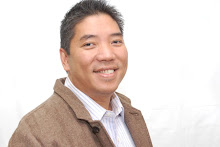By Ambeth Ocampo
Philippine Daily Inquirer
First Posted 02:45:00 12/03/2008
Historians are natural-born pack rats, their living spaces often littered with books and papers. Their life and livelihood come from all that clutter. There is order in that mess, so in my home the cleaning rules are that books or papers may be stacked up neatly but must not be moved to any other place lest I have to look frantically for them. No piece of paper on any surface should be thrown away, except those that have been crumpled, torn, and thrown into the wastebasket. My father added another rule: have two wastebaskets, one for immediate disposal and the other to be reviewed lest something important be thrown away.
By far the most organized study I have seen was that of the late Teodoro A. Agoncillo. Everything had its rightful place. Knowing his part in history, Agoncillo would file every bit of paper he received—from utility bills to letters, and even random notes from students on manila paper, which he later had bound into scrapbooks. If you opened the books in his library, you would find typewritten notes on the book inside. Sometimes he would paste commentary or citations on various pages that moved him.
Before he became old and infirm, E. Arsenio Manuel filed the research papers of his students by topic, indexed them, and bound them in a series called “Pasig Papers.” These had little to do with Pasig the place, or Pasig the river. The scrapbooks contained research on history, folklore, anthropology, etc. Manuel said he learned this from H. Otley Beyer, whose “Ethnographic Papers,” also arranged by geographic region and topic, are now in the National Library of Australia.
Books are a special challenge because they take up space, and, in my case, they are so heavy that some of my narra shelves have bent or fallen off altogether. I am often too lazy to file my books properly, so when I am trying to beat a deadline and I can’t find a reference, I rush out and buy a new one—only to come upon, days later, two copies I couldn’t find when I needed them.
When Sally Arlante, then of the University of the Philippines Archives, asked for my papers 13 years ago, I readily agreed, to clear my work space. What was then a mess in my study is now neatly arranged in folders, kept in a climate-controlled room in acid-free boxes. A catalogue put order into my papers and I can now see my life in outline. Every year I send boxes of papers to UP, sparing my sisters the long and painful task of sorting them out when I pass away. I turn over research that I have used, research that I will probably never use, so that a younger person can use them and build a career.
Doreen Fernandez passed away before she could organize and donate her papers to some archive. That task was left to her sister Della Besa and her niece Maya Roxas who recently turned over boxes of papers, photos, newspaper clippings, correspondence, etc. to the Ateneo Library of Women’s Writings (ALIWW). Doreen’s papers join those of other writers like Encarnacion Alzona (first Filipina historian), Lina Flor, and friends and contemporaries like Gilda Cordero Fernando and Eugenia D. Apostol. Perhaps ALIWW should visit the Philippine Daily Inquirer and ask for the papers of Letty Jimenez-Magsanoc, Rina David and Thelma San Juan, because journalists are very bad with papers. Surely one person’s trash is another person’s treasure.
A natural teacher like Doreen would want her papers to be useful, to be consulted by others rather than kept as relics to be venerated. Now other scholars can start where she left off in terms of food and theater research.
Among Doreen’s many affiliations was with the Cultural Research Association of the Philippines, which is now rightfully extinct because its acronym spells out CRAP! Was this a private joke or a Freudian slip? Her papers might provide an answer.
Those who were fortunate to have been invited into Doreen’s cluttered study on Acacia Lane in Mandaluyong City would have marveled that the small, book-lined cubbyhole cut out from their bedroom, in a space bursting with books, papers, and bric-a-brac, was where many of her columns, lectures, and scholarly articles were born. They were first written neatly in long hand, later on an IBM electric typewriter, then on one of the earliest word processors in Philippine academia, a white monster she called “Fred” or some other familiar name.
Her similarly cluttered office at the Ateneo de Manila University’s Department of Communication was visual proof that she was very busy. Now these papers, photographs, letters, photocopies, offprints, menus, and perhaps even hurriedly scribbled notes on napkins and notebooks are evidence of a productive and well-lived life. We have published columns and sometimes drafts printed out with her corrections and additions always in her clear handwriting. All these just prove that clear thinking is a must in any sort of writing whether you write in long hand, 3x5 cards, yellow pad, or a Blackberry. That is something you learn by going through her papers.
ALIWW is a specialized library for women’s writings. One can only hope that other major universities will follow suit and fill their archives and libraries with the papers of their distinguished and productive professors, so that a younger generation may continue to learn from the generation that came before them.
* * *
Comments are welcome at aocampo@ateneo.edu.
Thursday, December 4, 2008
Subscribe to:
Post Comments (Atom)

No comments:
Post a Comment